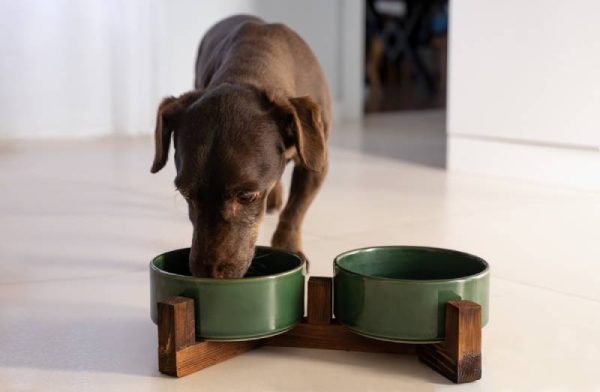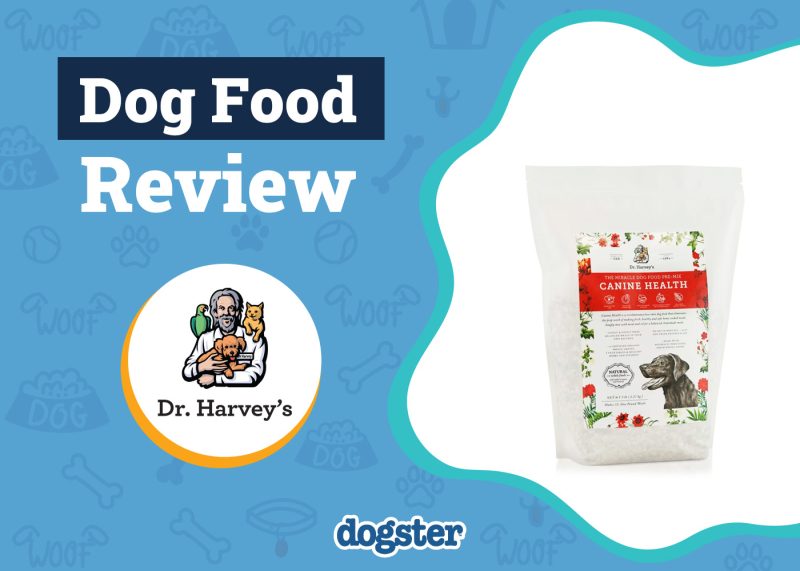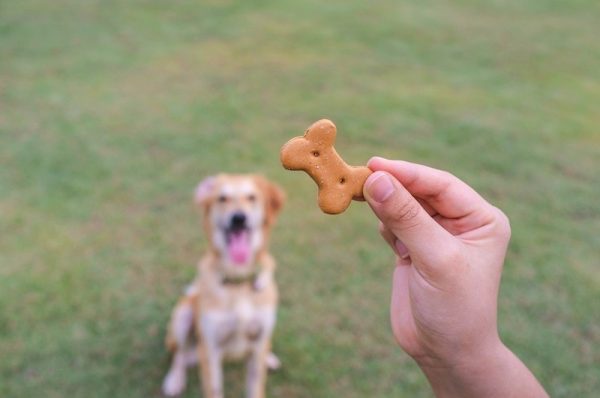In this article
Pancreatitis can be a severe, painful, debilitating disease in humans and dogs alike. Because this organ plays so many important functions within the body, inflammation within the pancreas (known as pancreatitis) can cause effects far beyond the pancreas itself. Pancreatitis in dogs is fairly common, though the severity does vary significantly from dog to dog. One of the key components of pancreatitis is what you can, and cannot, feed your pup while they undergo recovery.
If you are wondering if tuna is one of the foods that a dog with pancreatitis can eat, read on, as the answer may be more complicated than you think. In general, the best practice is probably to avoid feeding tuna to dogs with pancreatitis.

What is Pancreatitis?
Pancreatitis is the medical term for inflammation in the pancreas. This inflammation can arise from various causes, including dietary indiscretions, poor diet choices, infections, or primary GI conditions. Regardless, once inflammation occurs in the pancreas, a host of potential complications can arise, as the pancreas is responsible for so many different physiological functions within the body.
In health, the pancreas serves to aid in the digestion of certain components of food, including fats, carbohydrates, and proteins. To do this, the pancreas produces digestive enzymes that are released after eating, and help to break down the contents of a meal. These enzymes are inherently irritating, and in pancreatitis, can leak into surrounding tissues, exacerbating the disease. Further, once inflamed, the pancreas may have marked trouble performing these digestive functions, making the selection of foods hugely important.
The pancreas also has a roles in regulating blood sugar levels, through the production of insulin. If inflammation is severe enough, it can also become difficult for the body to effectively control blood sugar levels, and this may lead to higher than-ideal blood sugar levels (known as hyperglycemia).
Inflammation can either be long-standing (chronic), or of short-term duration (acute). Different treatment approaches may be needed for each type, though some overlap may certainly occur.

Choosing Foods for Dogs with Pancreatitis
Because the pancreas is so critically involved with digestion, once pancreatitis occurs, picking foods that are easy to digest and require minimal help from the pancreas is one critical component of its treatment and recovery. Another important component is ensuring that you are not feeding foods that exacerbate the inflammatory conditions.
Before introducing any new food item you’re unsure about to your dog’s diet, it’s always best to check with a veterinarian first.
If you need to speak with a vet but can't get to one, head over to PangoVet. It's our online service where you can talk to a vet online and get the personalized advice you need for your pet — all at an affordable price!
In general, the above means avoiding any foods that are extremely high in fats, carbohydrates, sugars, or proteins, since the pancreas is so deeply involved in breaking down all of these nutritional components. Instead, you should aim to give the pancreas a chance to rest and recover by feeding foods that are low in the above, or more balanced, so they are more easily digestible. So, what food options exist that fit the bill?
Prescription Foods
A number of commercial options exist, broken into two types of foods: prescription and non-prescription foods. Prescription foods need to be approved or prescribed by a veterinarian, because they are highly specific for certain types of medical conditions and may cause issues if used inappropriately. There are a number of prescription, highly-digestible, minimally inflammatory foods available for dogs with pancreatitis from most of the major pet food companies. The good news is that if a dog doesn’t like one, there will often be a few other options to pick from, that they might find more tasty.
Non-Prescription Foods
The second type of commercial food for dogs with pancreatitis is found in pet stores, or online—which are aimed more at general GI upsets, and made to be easier to digest. These diets don’t require a prescription to purchase and are also generally a bit more budget-friendly as well. However, they may not be as appropriate for certain cases of pancreatitis.
Homemade Foods
In some instances of pancreatitis, your dog’s vet may ask you to go with a third option for short periods: homemade food, or bland diets. Each vet generally has their own preferred recipe for these particular instances, so make sure to check with them on what components they want you to feed your dog, in what proportions, and for how long.
For all of the above options, it’s important to seek recommendations from a vet if your pup has pancreatitis, to find out what nutritional choices best fit your dog’s particular needs. Diets for dogs with pancreatitis are a critical component of recovery, but also require strict medical supervision to ensure your dog isn’t missing out on important nutrients, or on the contrary, receiving extra nutrients that might worsen the condition.
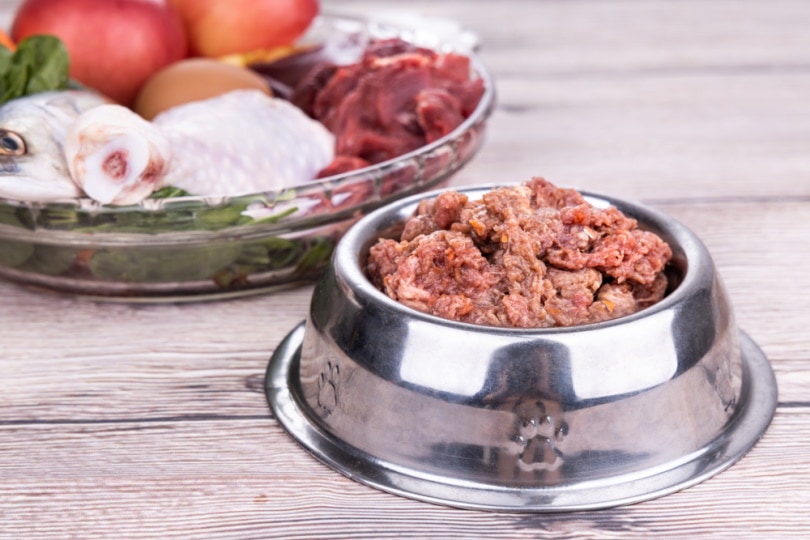
Is Tuna Good or Bad for Dogs with Pancreatitis?
Tuna comes in a few different forms: raw, cooked, and in cans or pouches, amongst others. Raw foods should never be fed without express direction from a vet, so feeding raw tuna can be immediately taken off the table. This is because raw foods, in particular fish, carry risks of bacterial contamination, and parasites, which can certainly make existing GI issues worse. Tuna also tends to be a relatively oily fish, which makes it less than ideal food for dogs with pancreatitis.
Tuna can also contain high levels of mercury and other toxins, which, though not directly related to pancreatitis, add additional concerns—best avoided when possible. Finally, canned or pouched tuna may have additional additives, such as oil or flavoring that can make pancreatitis worse. Thus, there are far better options to select over tuna for feeding a dog with pancreatitis.
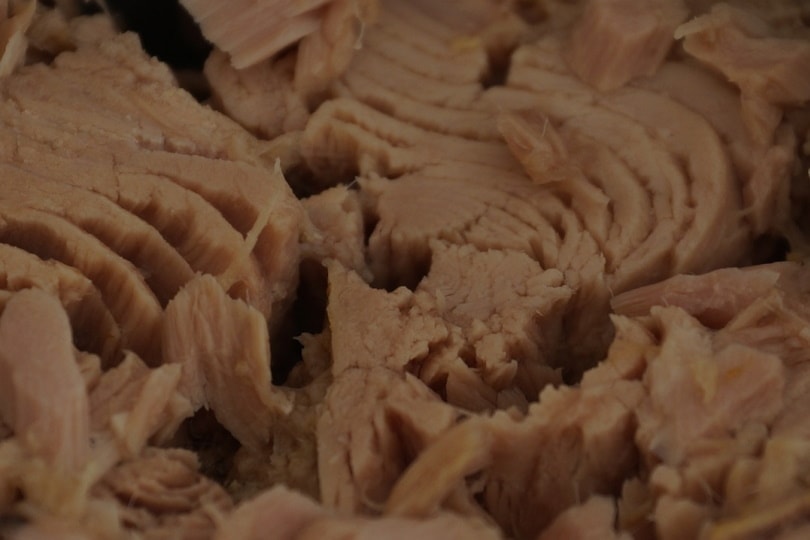
What Are Some Better Food Choices for Dogs with Pancreatitis?
Human foods that dogs with pancreatitis might be able to eat, in small quantities as a treat, might include the following:
- Turkey (without skin or bones)
- Chicken (without skin or bones)
- Boiled white rice

Frequently Asked Questions (FAQ)
What Are the Symptoms of Dog Pancreatitis?
Great question! Symptoms of pancreatitis may include the following:
- Vomiting
- Diarrhea
- Blood in the stool
- Loss of appetite
- Lethargy
- Abdominal pain
- Drooling

Which Dogs Can Get Pancreatitis?
Any dog can potentially get pancreatitis. There are no definitive causes for pancreatitis, though indiscretion with fatty foods does seem to be a factor for some pups. There are suggestions, as well, that some breeds such as miniature schnauzers, miniature poodles, and cocker spaniels may have a higher incidence of the disease. Likewise, female dogs are more prone to get pancreatitis than male dogs. Others believe that overweight and inactive dogs may also be at a higher risk.

Conclusion
A variety of feeding options exist for dogs with pancreatitis, but skipping tuna might be the best choice. Instead, look for options that are either prescribed or recommended by a vet. They might even work with you to suggest a homemade diet for your pup.
See also:
Featured Image Credit: ubert, Pixabay












